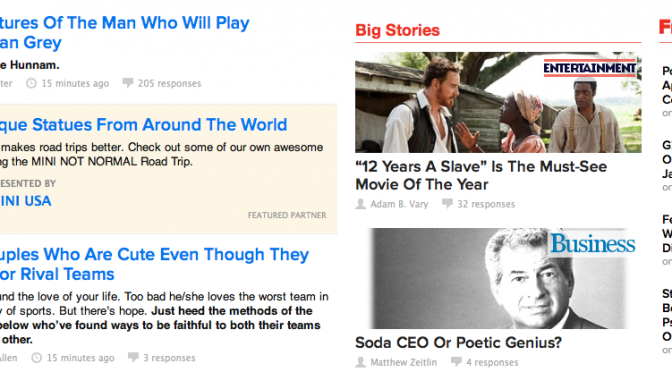In my opinion, every blog should be different. Every blog should have some aspects that make it unique, fresh, and interesting. It should capture my attention with its headlines, photographs, digital media, and anything else that’s new or innovative. But enough about what I think makes a great blog. Here three examples of what some of the experts think makes a blog worth reading:
Carroll in his chapter on digital writing stresses the importance of credibility in a blog. He explains credibility as “believability based on the notion that news media present accurate, unbiased and complete accounts of news and events.” Often times, I find myself on blogs looking for a different side of current events in the news. While I am looking for different perspectives, I will only go to sites where I know the information is accurate. Some blogs utilize hyperlinks to other websites and blogs to assert the credibility behind the information that they are posting. One blog that makes a good case for it’s credibility is Buzzfeed.com. While Buzz Feed relies on several writers to add their own personality and spin to a post, they have links within those articles to other websites where the same topic is covered more in depth. Additionally, they have an entire table on the right side dedicated to “Fresh on the web” which links you to alternative sources of information. In that way, they are quite effective at cross-referencing their sources and boosting their credibility. (Side note: Buzz Feed is not technically a blog, but I believe that there is a great deal to be learned from this websites stylistic choices).
Another aspect of a blog that makes it interesting and fresh is the idea that it may start with one idea in mind and end on a completely different note. Unlike academic writing, often times blog writers find themselves discovering a more creative way of looking at their writing, and as a result, their perspective on a subject. In Pete Rorabaugh’s article “Organic Writing and DIgital Media: Seeds and Organs,” he explains the creative process that goes into building a blog post, as opposed to an academic article, by saying: “organic writing begins with a seed–an idea–and grows in unexpected ways.” He continues on to explain that the creative mind, if let to grow organically without any predisposed notions of structure, will yield unexpected and imaginative thoughts that help to enrich a blog’s writing. One blog that is written with an “organic” style is UnbraveGirl.com. This blog chronicles the life of a teacher who is constantly moving around, from Buffalo, NY to Japan to be exact, on a quest to figure out what it is that she wants out of life. Much like her story, her articles have a similar air of unpredictability. She writes in an organic fashion that is refreshing and expository of who she is as a blogger, and a person.
When writing a good blog, it’s important to choose every word wisely. Sean Michael Morris in his article “Digital Writing Uprising: Third-order Thinking in the Digital Humanities” addresses how critical it is to keep the readers attention by choosing provoking words and titles. He argues: “Digital words have lives of their own. We may write them, birth them ourselves, but without any compunction or notice, they enact themselves in ways we can’t predict.” The point that Morris is trying to convey is that digital media and blogging gives life to words. Readers are interacting with these words and experiencing them, not just reading lifeless words on paper. Proper word choice then, can make all the difference in the world. A blog that makes good use of word choice is TheBloggess.com. With titles like “I didn’t eat anyone that I know of” and “15 things you absolutely must know about social media or your face will melt off and get eaten by goats.” The bloggess uses her words to draw the reader into an otherwise normal topic. It is her personal style-and word choice- that grips the reader, and then keeps them reading for more.


